20 Things You Didn't Know About ... Nanoparticles
Scientific India
|November - December 2018
Nanoparticle research is a fascinating branch of science. Nanoparticles are defined as particles with a diameter smaller than 100 nm, are increasingly used in different applications, including drug carrier systems and to pass organ barriers such as the blood-brain barrier. The strongly size-related properties of nanoparticles offer uncountable opportunities for surprising discoveries. Nanotechnology is helping to considerably improve, even revolutionize, many technology and industry sectors: information technology, homeland security, medicine, transportation, energy, food safety, and environmental science, and among many others. 20 importants facts about nanoparticles given below:
-

1. Naturally occurring nanoparticles include organic (proteins, polysaccharides, viruses, among others) as well as inorganic compounds (iron oxyhydroxides, aluminosilicates, metals, among others) and are produced by weathering, volcano eruptions, wildfires or microbial processes.
2. Nanoparticles were used by artisans as far back as Rome in the fourth century in the famous Lycurgus cup made of dichroic glass as well as the ninth century.
3.The therapeutic use of gold can be traced back to Chinese medical history in 2500 BC. 4. Swarna Bhasma and Roupya Bhasma is still used in the Indian ayurvedic and Unani medicine for rejuvenation, revitalization and for treating various diseases.
5.Michael Faraday in 1857 provided the first scientific description of the properties of nanoparticles in his famous paper “Experimental relations of gold (and other metals) to light”. This was probably the first rationalized report on the purposeful synthesis of colloidal gold nanoparticles.
6. The term colloid was coined by Thomas Graham (1861) for suspended particles in liquid medium and was categorized to be in the size range 1 nm to few micrometers.
यह कहानी Scientific India के November - December 2018 संस्करण से ली गई है।
हजारों चुनिंदा प्रीमियम कहानियों और 10,000 से अधिक पत्रिकाओं और समाचार पत्रों तक पहुंचने के लिए मैगज़्टर गोल्ड की सदस्यता लें।
क्या आप पहले से ही ग्राहक हैं? साइन इन करें
Scientific India से और कहानियाँ
Scientific India
Japanese physicists were the first to measure the most tolerant entanglement state, the W state
There are many unusual things that happen in the world of quantum physics.
3 mins
September - October 2025

Scientific India
The Fifth Force: Could It Unlock the Secret of Dark Matter?
What if the universe is powered by a force we've never seen before? For centuries, science has explained nature with four fundamental forces.
3 mins
September - October 2025

Scientific India
A flu test you can chew
As flu season nears in the northern hemisphere, scientists are exploring a surprising new way to detect infection: through taste.
1 mins
September - October 2025
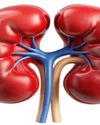
Scientific India
Lab-Grown Kidney Brings Artificial Organ Dream Closer to Reality
In a major leap toward bioengineered organ replacement, scientists have successfully grown human kidney 'assembloids' in the laboratory that mimic key structural and functional features of natural kidneys.
1 min
September - October 2025

Scientific India
Your pumpkin might be hiding a toxic secret
Pumpkins, squash, zucchini, and other members of the gourd family have a surprising trait: they can take up pollutants from the soil and store them in their edible parts.
1 mins
September - October 2025
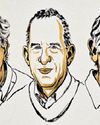
Scientific India
2025 Nobel Prize in Physics Reveals Quantum Secrets in Superconducting Circuits
The 2025 Nobel Prize in Physics has been awarded to John Clarke, Michel H. Devoret, and John M. Martinis for their pioneering experiments that brought quantum mechanics from the invisible atomic world to the macroscopic scale a system large enough to hold in your hand.
1 mins
September - October 2025
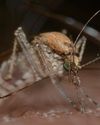
Scientific India
Genomic Evidence Redefines the Evolutionary Age of Mosquitoes
A new genetic analysis has shaken up what we thought we knew about one of humanity's most notorious pests the mosquito.
1 min
September - October 2025

Scientific India
Nobel Prize in Chemistry 2025: Building Molecular Architectures with Room to Breathe
In a scientific breakthrough that bridges molecular design with planetary-scale problems, the 2025 Nobel Prize in Chemistry has been awarded to Susumu Kitagawa, Richard Robson, and Omar Yaghi.
1 mins
September - October 2025
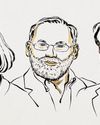
Scientific India
Guardians of Immunity: Nobel Prize 2025 Honors Discoveries that Keep the Immune System in Check
The 2025 Nobel Prize in Physiology or Medicine has been awarded to Mary E. Brunkow, Fred Ramsdell, and Shimon Sakaguchi for their groundbreaking discoveries in the field of peripheral immune tolerance a crucial mechanism that prevents the body's immune system from turning against itself.
1 mins
September - October 2025
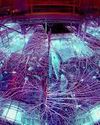
Scientific India
'Is cold nuclear fusion feasible?
In early May 1989, two chemists from the University of Utah, Pons and Fleischmann, arrived in Washington, U.S.A. The aim is to present their findings to members of the US Congress.
3 mins
September - October 2025
Translate
Change font size

